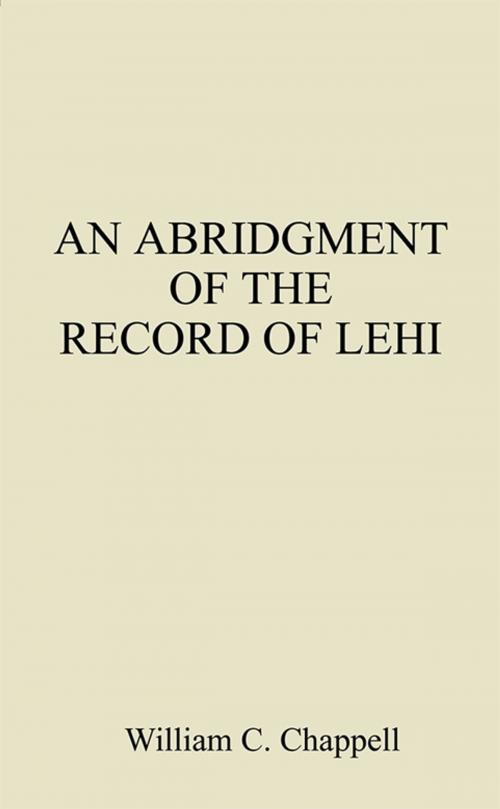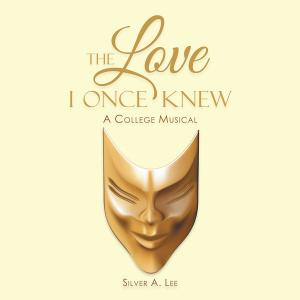An Abridgment of the Record of Lehi
Nonfiction, Religion & Spirituality, Inspiration & Meditation, Spirituality, Reference & Language, Education & Teaching, History| Author: | William C. Chappell | ISBN: | 9780759639058 |
| Publisher: | AuthorHouse | Publication: | January 22, 2002 |
| Imprint: | AuthorHouse | Language: | English |
| Author: | William C. Chappell |
| ISBN: | 9780759639058 |
| Publisher: | AuthorHouse |
| Publication: | January 22, 2002 |
| Imprint: | AuthorHouse |
| Language: | English |
Part I of this book gives an abridgment of the record of the prophet Lehi, which was the first book engraved upon the gold plates of the Book of Mormon. The original Book of Lehi, which was translated by Joseph Smith in 1828, was stolen and became lost from the Book of Mormon. Since that time they have simply been referred to as the lost 116 manuscript pages.
This plain abridgment of the record of Lehi answers several questions about the origin of the Book of Mormon. For instance, it explains the connection with Egypt, revealing that Lehi was a Jew, or rather an Israelite, from the land of Egypt. It reveals that Labans plates of brass were actually Lehis plates of brass that were made by his people in the land of Egypt. As well, it reveals that the land of their inheritance is simply their house and farm, which was near Hebron in the land of Judea.
Since this is from the personal account of the record of Lehi, he describes the nature and function of the Liahona, the making and composition of the metal plates, and their building the ship of Nephi at Bountiful. Lehi further explains something about the characters of their language which were inscribed upon the metal plates. The characters had been developed by his forefathers who were Israelites living in the land of Egypt, which were unique to them, and they cannot be proved to the world.
Part II of this book describes a simple and realistic model for the unknown geography of the Book of Mormon. After all these years the actual geographic setting for the locations found in the Book of Mormon has not been understood. If the account in the book is true, then there is a real geography to be found, as well. The author believes that he has discovered a simple and realistic answer to the question of the Book of Mormon geography.
The author has a testimony of the truthfulness of the Book of Mormon, and believes that those were real lands, and cities, and events that were so faithfully recorded therein. He wishes to make those places and events more realistic to people when they read and study the Book of Mormon.
Part I of this book gives an abridgment of the record of the prophet Lehi, which was the first book engraved upon the gold plates of the Book of Mormon. The original Book of Lehi, which was translated by Joseph Smith in 1828, was stolen and became lost from the Book of Mormon. Since that time they have simply been referred to as the lost 116 manuscript pages.
This plain abridgment of the record of Lehi answers several questions about the origin of the Book of Mormon. For instance, it explains the connection with Egypt, revealing that Lehi was a Jew, or rather an Israelite, from the land of Egypt. It reveals that Labans plates of brass were actually Lehis plates of brass that were made by his people in the land of Egypt. As well, it reveals that the land of their inheritance is simply their house and farm, which was near Hebron in the land of Judea.
Since this is from the personal account of the record of Lehi, he describes the nature and function of the Liahona, the making and composition of the metal plates, and their building the ship of Nephi at Bountiful. Lehi further explains something about the characters of their language which were inscribed upon the metal plates. The characters had been developed by his forefathers who were Israelites living in the land of Egypt, which were unique to them, and they cannot be proved to the world.
Part II of this book describes a simple and realistic model for the unknown geography of the Book of Mormon. After all these years the actual geographic setting for the locations found in the Book of Mormon has not been understood. If the account in the book is true, then there is a real geography to be found, as well. The author believes that he has discovered a simple and realistic answer to the question of the Book of Mormon geography.
The author has a testimony of the truthfulness of the Book of Mormon, and believes that those were real lands, and cities, and events that were so faithfully recorded therein. He wishes to make those places and events more realistic to people when they read and study the Book of Mormon.















